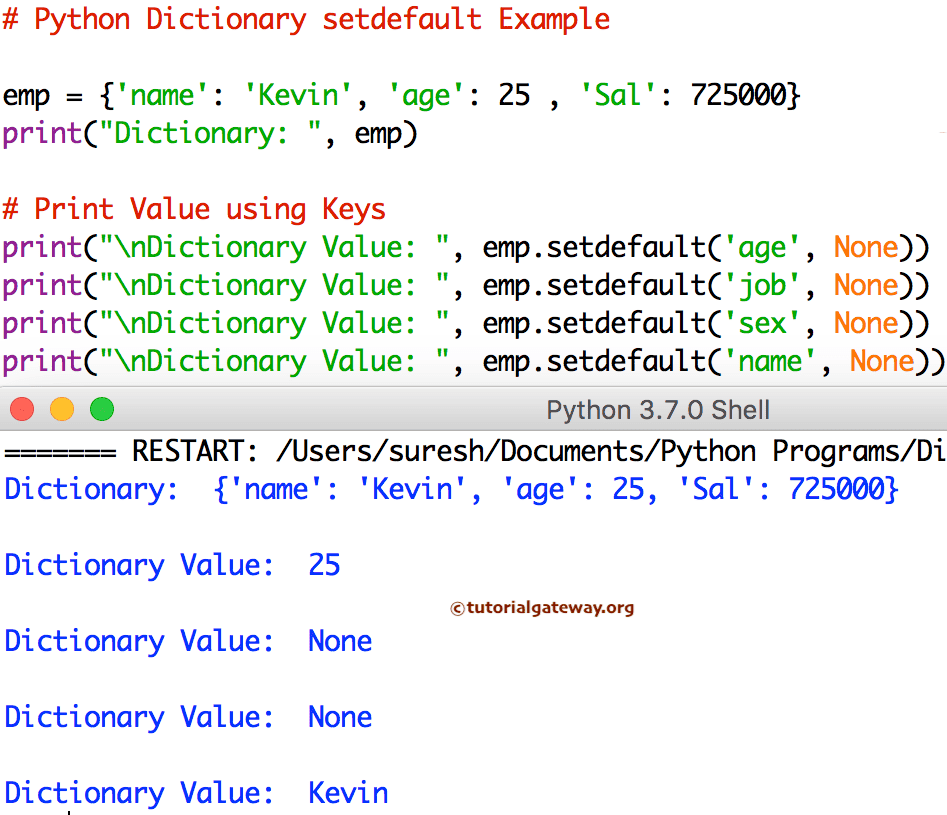


#PYTHON DICTIONARY HOW TO#
Note that this triggers a linear scan through the values of the dictionary, short-circuiting as soon as it is found, so this is a lot less efficient than checking whether a key is present. Representing an object or structured data using (potentially nested) dictionaries with string keys (instead of a user-defined class) is a common pattern in Python programs. This Python Dictionary tutorial covers: How to Define a Dictionary How to Access Values in a Dictionary How to Add, Update, and Delete Keys from a. In Python 2, it's more efficient to use 'one' in d.itervalues() instead. A Python dictionary is a collection of key:value pairs. Well understand in a bit what this means. In many other languages, this data structure is called a hash table because its keys are hashable. Python Dictionaries Access Items Change Items Add Items Remove Items Loop Dictionaries Copy Dictionaries Nested Dictionaries Dictionary Methods Dictionary Exercise Python If.Else Python While Loops Python For Loops Python Functions Python Lambda Python Arrays Python Classes/Objects Python Inheritance Python Iterators Python Polymorphism Python Scope Python Modules Python Dates Python Math Python JSON Python RegEx Python PIP Python Try. to test if 'one' is among the values of your dictionary. Rediscovering Dictionary Order in Python Understanding What Sorting A Dictionary Really Means Sorting Dictionaries in Python. Python dictionaries work with the same concept, the word whose meaning you are looking for is the key, and the meaning of the word is the value you do not need to know the index of the word in a dictionary to find its meaning. A Python dictionary is a data structure that allows us to easily write very efficient code.


 0 kommentar(er)
0 kommentar(er)
